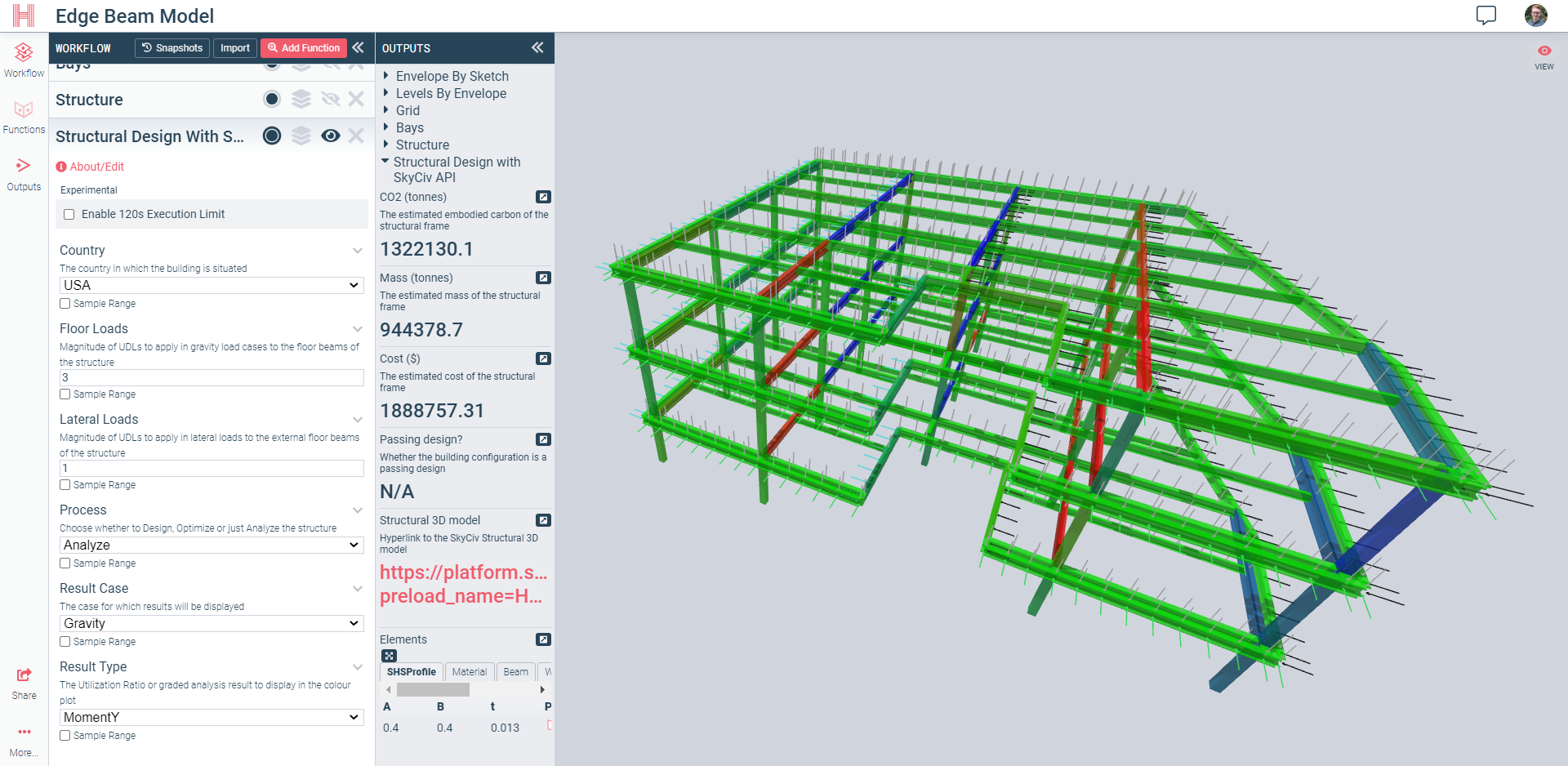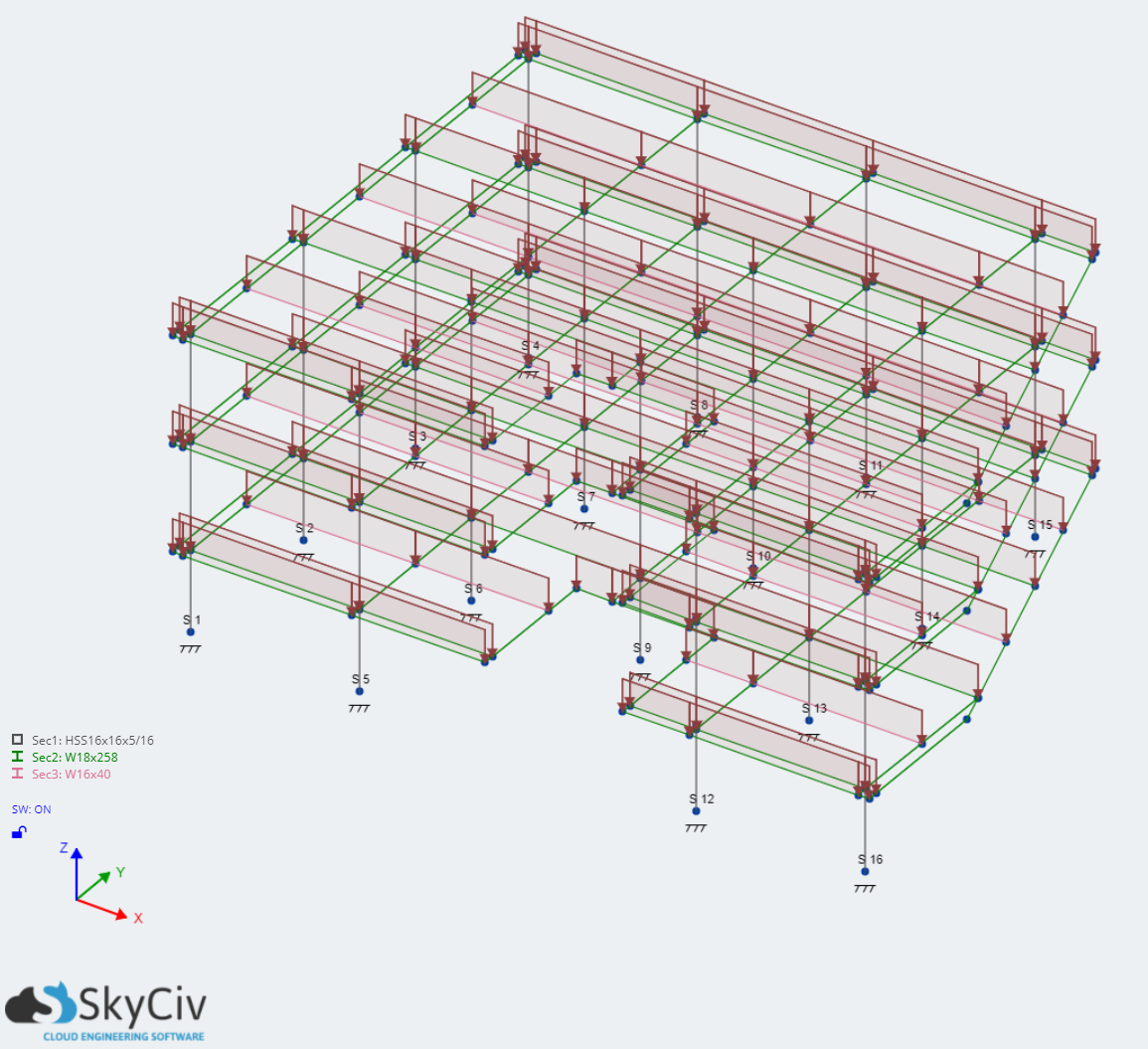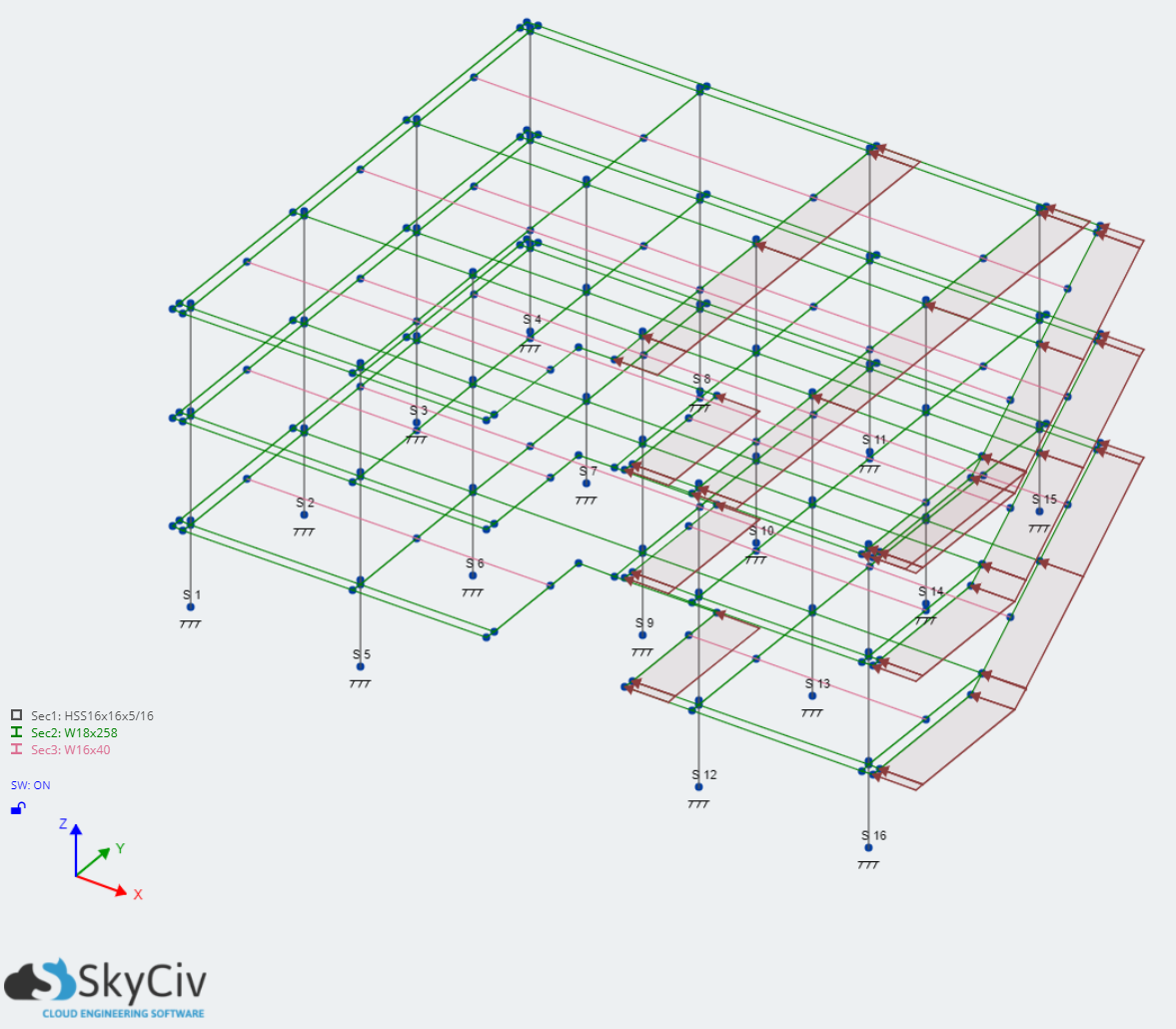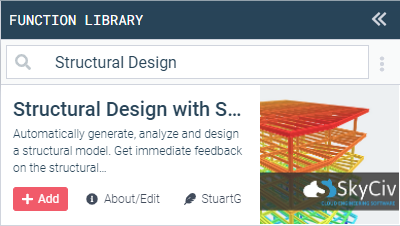SkyCiv Brings Structural Design to the Hypar platform
Here at SkyCiv, we are big on automation. We built our structural analysis and design API to allow you as users to automate your structural workflows, ultimately saving you time, cost and the anguish of repetitive operations. In the latest showcase of our API, we have brought structural analysis and design to the Hypar platform.
With the new SkyCiv function running on Hypar, Architects, Structural Engineers and stakeholders can explore different design options, confirm their structural feasibility, and measure their material economy, all in one live, collaborative workflow.
The Hypar platform for generative building design
Before we go on, let’s quickly get our heads around Hypar – the next-generation platform for generating, designing and sharing building systems. At a user’s level, you can add a variety of existing functions (from the extensive function library on Hypar) to create a workflow that accomplishes part of your work, like generating multiple options for an architectural brief. Users can also write their own functions to supplement the library on Hypar, and this is exactly where the SkyCiv function, built on our API, comes in – to bring structural analysis and design capability to the Hypar platform.
An end-to-end workflow for rapid prototyping of building structures
So what does SkyCiv on Hypar do? It doesn’t just allow you to run a structural analysis or design, it takes care of the heavy lifting for you, and gets you to the key data that supports decision making as quickly as possible. With an architectural model already defined in Hypar, adding the SkyCiv function to your workflow determines (in minutes) whether your structure is feasible, how economical your design is, and what parts of the building govern the structural performance.
Add the SkyCiv function to your workflow on Hypar, and it will run automatically. When completed, we see the following:

- On the left we have the inputs to the SkyCiv function: country, the loads we want to add, whether to analyze or design, and what to show in the graphic when the results come back.
- The outputs from the SkyCiv function: whether the structure passed design checks; the structure cost, embodied CO2 and mass; and a hyperlink to open the model on the SkyCiv platform.
- The 3D graphic displaying a colour plot of the results we’ve chosen to view, helping us to hone in on parts of the structure that govern the structural design.
“determine in minutes whether your structure is a feasible, economical design”
The first things we see in the output pane are the quantities for Cost, CO2 and Mass – giving us an indication of whether the structure represents good material economy or not. Furthermore, we see the design status. If we chose to run design in the first step, this reports whether the structure passes design checks and therefore represents a feasible design.
In the 3D graphics, drawn on the actual Hypar model, we see colouring on the structural members, indicating which members have the greatest values for the result we are currently looking at (by default this is the major axis moment). We also see the loads that have been created on the structure (for all 5 loadcases at once) – these are the loads that the SkyCiv function has generated from the load magnitudes specified in the inputs pane.
Behind the scenes
When the SkyCiv function runs on Hypar, it does the following:
- Generates a structural analysis model, comprising the structure (nodes and members) and loads,
- Passes this model to the SkyCiv platform,
- Runs either a structural analysis or design, as per the user’s request,
- Shows a colour plot of the user’s chosen analysis or design result on the Hypar model,
- Shows whether the structure constitutes a passing design, as well as the structure steel tonnage, cost and embodied carbon
All of this process is completely automated. There is no need for a Structural Engineer to open up SkyCiv, model the structure, apply loads, or run analysis.
The SkyCiv structural analysis and design model – generated
The structural analysis model generated during the running of the SkyCiv function on Hypar, is available afterwards, should the Engineer wish to the check the process, do further detail design, or export the model to another BIM tool, such as Revit.
If we navigate to the Hypar folder in our Structural 3D file manager, we can open the model and see what has been created. We see all the nodes, members and supports, as well as the gravity loads:

We can also review the lateral loads, for example, those on the ‘East’ face of the model:

We can then take this model forward in whatever way we wish. We can modify parts of the structure to reflect detail not present in the Architectural model, change restraints on the beams/columns or add bracing, or run additional analyses such as nonlinear and buckling analyses.
Where to get started
To try out the SkyCiv function on Hypar, take a look at our demo workflow here. If you have an existing Hypar workflow, try adding the SkyCiv function to it! Just search for “Structural Design” or “SkyCiv” in the function library:

Summary
The SkyCiv Hypar integration brings powerful end-to-end capability for the rapid prototyping of building structures, built on our state-of-the-art web API. If you are looking for rapid structural checks in the early phase of design, give it a try.
Otherwise, if you are looking to automate parts of your structural workflow through powerful integrations like Hypar & SkyCiv, get in touch with us today.
API Manager - UK/Europe
MEng (Hons), PhD (Engineering)



